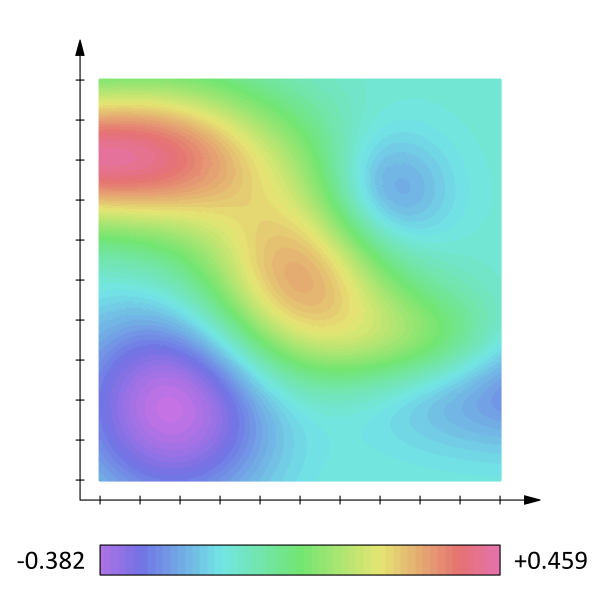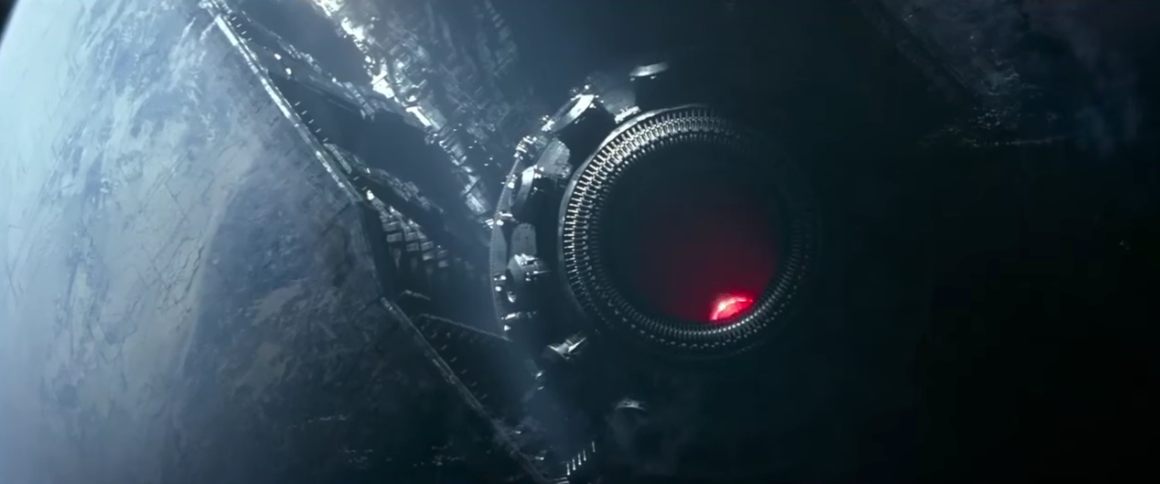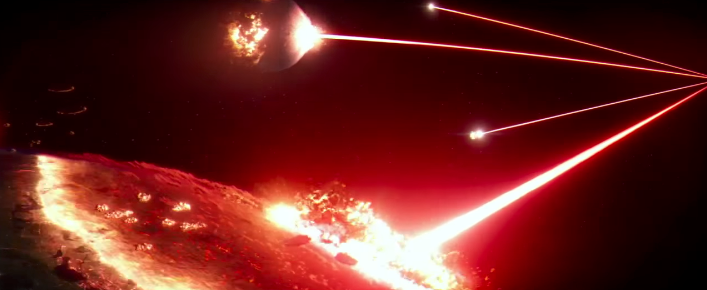The Star Wars films feature not one but three battle stations capable of destroying planets. In "A New Hope," the DS-1 Orbital Battle Station employed a super laser powered by a hypermatter reactor to destroy Alderaan. Following the "Battle of Yavin," the Empire returned with the Death Star II, an even more formidable weapons platform that also employed the use of the hypermatter reactor powered super laser.
In "The Force Awakens," the First Order, formed from the remnants of the Old Empire, have risen to create an even more formidable weapon: the Starkiller Base. This weapons platform is very different from its predecessors and, according to the film's novelization, uses an exotic form of energy — Dark Energy. So what exactly is this new "stuff" and what makes it different from the first two Death Stars. Come to think of it, does it have enough energy to blow apart planets, and how much energy does it take to destroy a planet anyway?
The Force that binds the Universe
The Force binds the galaxy together but, in reality, everything is held together by the electromagnetic and gravitational forces. The charge of electrons makes chemical bonds possible but on planetary and galactic scales, it is gravity that permeates and holds everything together. Two particles attract each other through the gravitational force, which we can measure. Bring a lot of these particles close together and all these particles will come together. The energy needed to keep all these particles together is the Gravitational Binding Energy.
| Radius (km) | Mass (kg) | Binding Energy (J) | |
| Mercury | 2.44 | 3.30 × 1023 | 1.79 × 1030 |
| Venus | 6.05 | 4.87 × 1024 | 1.57 × 1032 |
| Earth | 6.38 | 5.97 × 1024 | 2.24 × 1032 |
| Mars | 3.40 | 6.42 × 1023 | 4.86 × 1030 |
| Jupiter | 71.50 | 1.90 × 1027 | 2.02 × 1036 |
| Saturn | 60.30 | 5.68 × 1026 | 2.14 × 1035 |
| Uranus | 25.60 | 8.68 × 1035 | 1.18 × 1054 |
| Neptune | 24.80 | 1.02 × 1026 | 1.68 × 1034 |
| Pluto | 1.15 | 1.27 × 1022 | 5.62 × 1027 |
The Gravitational Binding Energy is the total energy needed to keep everything together. It also represents the energy needed to toss every particle into space so that it never comes back. In essence, the Gravitational Binding Energy is the minimum energy the Death Star needs to destroy a planet.
Both Death Stars possess the power of several main-sequence stars, the type that converts hydrogen into helium — like our Sun. Our Sun releases 300 yottajoules per second (that is 3 followed by 26 zeroes). Both Death Stars, each with the power of several Suns, is more than be able to decimate the Earth. In fact, with some effort it could blow Jupiter apart - it may take some time to build up the required energy but it could do it. Now decimating Uranus is another matter. The planet is far more massive than other planets in the Solar System. Not even a couple of Death Stars working together could blow the planet apart, which brings us to Starkiller Base.
Physics of Starkiller Base
It is obvious that Starkiller Base is a far more powerful weapon. Unlike the two previous Death Stars, this platform is able to wipe out and entire solar systems with ease. When we first see the weapon in action, we see it sucking up a sun's plasma but is that even possible? Before I continue, I have to admit that Star Wars does not always get the physics right but that is ok as Rhett Allain points out in his Wired article.
Several writers, including Allain, have looked at the possible physics behind Starkiller Base. Anything with that type of power is bound to be interesting. Geekwire science editor, Alan Boyle, also looks at how the base uses plasma as a power source. We conclude that the First Order is pretty advanced when it comes to plasma physics.
If we use plasma for destructive purposes, how dangerous will it be? Kyle Hill of Nerdist also answers this question in his article The Physics of Starkiller Base — turns out it is very destructive. On its own, the new weapon could easily destroy five planets if it utilizes all the energy it takes to fuse all of its captured hydrogen into helium.
But storing all that plasma is a huge problem. Suns are massive and as Starkiller Base sucks up more and more of a sun's matter, the base's gravity increases to a point where everyone will be crushed to death. That is not all! As Starkiller Base absorbs a star, its spin increases to the point where its rotation will fling everyone out into space. Either way, they are doomed but to be honest, the Empire was never known for workplace safety. Do we expect the First Order to be any different?
Despite Star Wars physics not being the most accurate — parsecs anyone? — plasma is not the likely source of the base's power. For a better understanding, we turn to the movie's novelization. Starkiller Base runs on a type of dark energy called quintessence, which allows for a practically unlimited source of power; enough to decimate several planets over vast distances.
Starkiller Base uses an array of collectors on one side of the planet that gathers the dark energy in stages and sends it to the planet's core where it is held in place by the planet's magnetic field. There is also an artificial containment field on the planet's crust to supplement the planet's natural magnetic field. This makes the base extremely vulnerable when fully charged as a collapse in the containment field would release all that the stored energy throughout the planetary core and create a new star.
A History of an Expanding Universe
In 1998, two research groups, the Supernova Cosmology Project and the High-Z Supernova Search Team, both discovered from examining supernovae that the Universe was not just expanding but doing so at an accelerated rate. Three members (Saul Perlmutter, Brian Schmidt, and Adam Riess) from the two groups were subsequently awarded the 2011 Nobel Prize in Physics "for the discovery of the accelerating expansion of the Universe through observations of distant supernovae." While the description of the award by the Nobel Prize committee does not explicitly state dark energy as the reason for the accelerated expansion, physicists believe it is a possible explanation.
The notion of an expanding Universe led to the question of the Universe's ultimate fate. Would gravity eventually slow it down and cause it to collapse in on itself, or would it continue to expand forever? Perlmutter, Schmidt, and Riess' discovery answers that question. Turns out the Universe will expand forever and do so at an accelerating rate.
An Accelerated Expansion
Dark energy is not the only hypothesis as to why the Universe is expanding at an accelerated rate. One option is, there is no such thing as dark energy but rather our understanding of gravity is incomplete and needs to be modified. The other option is there is some extra "stuff" throughout the Universe that pushes on the fabric of space-time.
The idea behind dark energy is not impossible and has a basis in quantum mechanics, which predicts that in the vacuum of space, particles are constantly winking in and out of existence and generating quantum vacuum energy. One of this proposed forms resurrects the "cosmological constant." Einstein believed in a static universe and came up with the constant to "hold gravity back." The other is "quintessence" as seen in "The Force Awakens."

Both the Cosmological Constant and quintessence are scalar fields. Place a lot of thermometers throughout a room, you can map the temperature throughout the room at each point where there is a thermometer. Plot these values on a grid and you have a scalar field.
This brings up the two main differences between the Cosmological Constant and quintessence. While the Cosmological Constant is a constant scalar field meaning its value does not change over space, quintessence can vary and depending on its density, it can either be attractive or repulsive. It is believed that quintessence became repulsive about ten billion years ago.
Extracting Dark Energy to Destroy Planets
Whether the First Order can use Dark Energy to destroy planets depends on a few things. The first is whether or not dark energy interacts with matter. If it does not then there is no way physicists and engineers of the First Order will be able to capture or manipulate it, making it impossible to use in a solar system killing weapons platform. Second, it depends on whether the scalar field is constant or varies.
The air in an enclosed room is stagnant if the pressure throughout the room is constant — air moves from regions of high to low pressure. The same applies to dark energy. If the scalar field is constant, the First Order cannot move it about and trap it for destructive intent. This makes quintessence very exciting. Variations in the scalar field mean engineers of the First Order can create a force to do work and ultimately destroy a star system.
Is the Physics Right?
It appears that The Force Awakens makes several assumptions regarding Dark Energy — it interacts with matter, and the field can be manipulated to do work. This answers some of the physics problems in the previously mentioned articles. Star Killer Base is not sucking up plasma but rather what we see is the glowing after effects as it extracts energy from the Dark Energy field. It also means that the base's gravitational field does not increase so significantly that it crushes everyone inside or flings them out into space.
This does not mean there aren't problems. Quintessence's scalar field is very small and only becomes significant over large distances — over cosmological scales as a matter of fact. Star Killer Base is much too small to extract energy from the dark energy field and even if it could, any energy extracted would be too small to do anything. This by itself does not mean the movie is terrible. As Allain says about the physics in Star Wars:
"It is not their job to have correct science in their movie. Sometimes, you have to bend the laws of nature (or ignore them completely) in order to tell a story—and that’s OK."
So while the movie has taken some liberties where physics is concerned, they have managed to do tell a compelling and interesting story.







